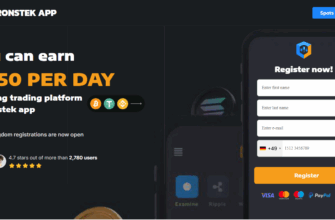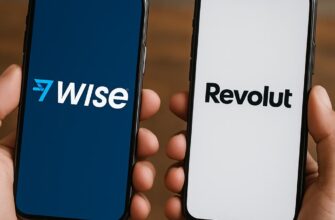Hey there, money-savvy readers! If you’ve ever wondered what Revolut is all about or why it’s got everyone buzzing, you’re in for a treat. I’m Sarah, a journalist who’s spent hours digging into this fintech gem, and together with the team at TheMors, we’ve put together a detailed look at Revolut—what it is, how it works, and why it might just be the financial tool you didn’t know you needed. From its standout features to its handy tariffs, we’ve got you covered with everything you need to know about this app that’s changing the way people handle money.
Whether you’re searching for “What is Revolut?”, “How to get a Revolut card,” or “What makes Revolut special?”, this article is here to answer your questions. Let’s unpack the magic behind Revolut, explore its services, and figure out why it’s worth a spot on your phone.
- What Is Revolut Exactly?
- What’s the Big Deal About Revolut?
- How to Open a Revolut Card Online
- Which Countries Does Revolut Support?
- Tariffs: What’s the Cost?
- What Makes Revolut Special? More Standout Features
- Why Should You Get a Revolut Card?
- Any Downsides?
- FAQ: Your Revolut Questions Answered
- Get the Full Scoop at TheMors
What Is Revolut Exactly?
So, what is Revolut? At its core, Revolut is a financial app that launched in the UK back in July 2015. Founded by Nikolay Storonsky and Vlad Yatsenko, it started as a simple way to swap currencies at real exchange rates—no sneaky bank fees involved. Since then, it’s grown into a full-on digital banking platform, offering everything from debit cards to crypto trading. By March 2025, it boasts over 50 million users worldwide, and it’s easy to see why.
Unlike traditional banks with brick-and-mortar branches, Revolut lives in your pocket. You manage everything through an app—your accounts, cards, even investments. It’s built for people who want fast, flexible, and affordable financial options, whether they’re traveling, shopping online, or just tired of lousy exchange rates. That’s the basic rundown of Revolut, but the real question is: what sets it apart?
When Did Revolut Appear?
Revolut hit the scene on July 1, 2015, starting as a prepaid card and currency exchange service. It got its big break by offering interbank exchange rates—something banks usually keep for themselves. Over the years, it snagged a European banking license in 2018 and expanded into the U.S., Australia, and beyond. Today, it’s a global player, constantly adding new features to keep up with what users want.
What’s the Big Deal About Revolut?
Now, let’s get to the heart of it: what makes Revolut special? Its uniqueness isn’t just one thing—it’s a combo of smart features that solve real money problems. Here’s why people love it, based on what we’ve found at TheMors after digging through reviews, forums, and the app itself.
Real Exchange Rates, No Hidden Fees
Picture this: you’re in Paris, swiping your card at a café. With a regular bank, you might get hit with a terrible exchange rate and extra fees. Revolut? It uses the real, mid-market exchange rate for over 30 currencies, with no markup on weekdays. Weekends come with a small 0.5–2% fee, but it’s still way better than most banks. That’s a huge perk for travelers or anyone dealing with multiple currencies.
Multi-Currency Accounts
One of Revolut’s coolest tricks is letting you hold and spend in dozens of currencies—like USD, EUR, GBP, and even PLN—all in one account. Need to pay in euros today and dollars tomorrow? No problem. The app switches currencies automatically based on where you’re spending, pulling from the right balance if you’ve got it loaded.
Easy-to-Use Debit Cards
Wondering how to get a Revolut card? It’s a breeze. You sign up, pick a plan, and order a card—physical or virtual—right from the app. Physical cards arrive by mail (delivery fees apply on the free plan), while virtual ones are ready instantly for online use. You can even add them to Apple Pay or Google Pay. It’s fast, and you’re in control.
Budgeting and Security on Lock
Revolut’s app doesn’t just hold your money—it helps you manage it. Built-in tools track your spending by category (groceries, travel, etc.), set budgets, and even freeze your card if you lose it. Plus, disposable virtual cards for online shopping? Genius. After one use, the number changes, keeping your account safe from fraud.
How to Open a Revolut Card Online
Let’s walk through how to open a Revolut card online and get started. It’s simpler than you might think:
- Download the App: Grab it from the App Store or Google Play.
- Sign Up: Enter your phone number, verify it with a code, and fill in your details—name, address, email.
- Verify Your ID: Snap a photo of your passport or driver’s license and a quick selfie. Takes about five minutes.
- Pick a Plan: Choose from Standard (free), Plus ($3.99/month), Premium ($9.99/month), Metal ($16.99/month), or Ultra ($55/month). More on tariffs later!
- Order a Card: Go to the “Cards” tab, pick physical or virtual, and confirm. Physical cards ship in a few days; virtual ones are instant.
- Top Up: Add money via bank transfer, debit card, or Apple Pay to start using it.
That’s it! You’ve got a Revolut card ready to roll.
Which Countries Does Revolut Support?
One question we see a lot is “Which countries does Revolut support?” As of March 2025, Revolut operates in over 35 countries, mostly in the European Economic Area (EEA), plus the U.S., Canada, Australia, Japan, Singapore, and more. You can sign up if you live in places like the UK, Germany, Poland, or Spain. Unfortunately, it’s not fully available in countries like Russia or India yet—users there often need a workaround, like a European address.
You can spend with Revolut in over 150 countries, though, even if you can’t open an account everywhere. From Brazil to Thailand, the card works wherever Visa or Mastercard is accepted. Check Revolut’s website for the latest list, as they’re always expanding.
Tariffs: What’s the Cost?
Revolut’s tariffs are a big part of its appeal. Here’s a quick overview of services and pricing based on the latest info:
Standard (Free)
- Free account and virtual card.
- Spend in 150+ currencies at real rates (up to $1,000/month fee-free).
- Withdraw $200/month from ATMs with no fees.
- Basic budgeting tools.
Plus ($3.99/month)
- All Standard perks.
- Customizable physical card.
- Higher ATM limits ($400/month).
- Priority support.
Premium ($9.99/month)
- Unlimited weekday exchanges.
- $800/month ATM withdrawals.
- Travel insurance and lounge access if flights are delayed.
- Fancy card designs.
Metal ($16.99/month)
- All Premium benefits.
- Metal card with 0.1% cashback in Europe, 1% outside.
- $1,200/month ATM limit.
Ultra ($55/month)
- Platinum card.
- Unlimited lounge access for you and a friend.
- No-fee exchanges anytime.
- Top-tier support.
Each plan builds on the last, so pick what fits your life—travelers might love Premium, while big spenders could go Ultra.
What Makes Revolut Special? More Standout Features
So, what are the key features of Revolut beyond the basics? Here’s what keeps users hooked:
Crypto and Investments
You can buy, sell, and hold cryptocurrencies like Bitcoin or Ethereum right in the app. It’s not a full trading platform, but it’s perfect for beginners. Plus, you can dabble in stocks or precious metals like gold—small stakes, big potential.
Revolut <18
Got kids? Revolut <18 lets teens (6–17) get their own card and app, linked to your account. You set limits and watch their spending—great for teaching money smarts.
Instant Transfers
Send money to other Revolut users instantly, no fees, anywhere in the world. Split bills with friends or pay a freelancer in seconds.
Why Should You Get a Revolut Card?
Why bother getting a Revolut card? Here’s why it might make sense for you:
- Travel Made Easy: No more overpaying on exchange rates or ATM fees abroad.
- Control: Freeze, unfreeze, or set limits on your card anytime.
- Savings: Real rates and no hidden fees mean more money stays yours.
- Flexibility: One app for banking, investing, and crypto? Yes, please.
Revolut reviews on Trustpilot (over 150,000 and counting) give it a solid 4.2/5. Users rave about convenience and low costs, though some grumble about weekend fees or slow support on the free plan.
Any Downsides?
Nothing’s perfect. Revolut’s customer service is app-only—no phone line unless it’s urgent fraud stuff. Free accounts have limits on exchanges and withdrawals, and crypto fees (1.5–2%) can add up. Still, for most, the pros outweigh the cons.
FAQ: Your Revolut Questions Answered
We’ve rounded up some common queries to wrap this up:
What is Revolut in simple terms?
It’s an app that acts like a bank, letting you spend, save, and swap money worldwide with low fees.
Which countries does Revolut support for sign-ups?
Over 35, including the UK, U.S., most of Europe, and Australia—full list on their site.
How do I get a Revolut card?
Download the app, sign up, verify your ID, and order a card—all in minutes.
Are Revolut tariffs worth it?
Depends—Standard’s great for basics, but Premium or Metal shine for frequent travelers or big spenders.
What makes Revolut different from banks?
Real exchange rates, multi-currency accounts, and total app control—no bank can match that combo.
Get the Full Scoop at TheMors
Revolut’s special because it flips the script on banking—fast, cheap, and user-friendly. Whether you’re jetting off to Berlin or just want better control over your cash, it’s a game-changer. This deep dive was brought to you by the journalists at TheMors, and we’re just getting started. Hungry for more money tips or tech breakdowns? Swing by TheMors – Breaking News for the latest stories and insights. Check us out and keep your finger on the pulse!









